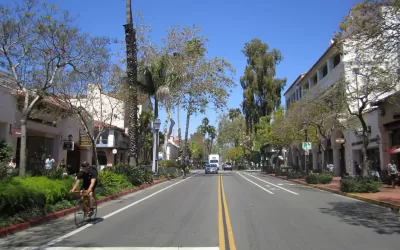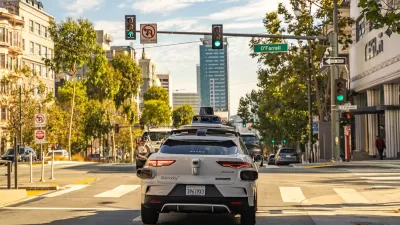Sidewalk Labs, a smart cities shop within the Alphabet corporate structure, is working to revolutionize technology's role in city planning. Sidewalk Labs recently released the street design principles it's using to guide that effort.

"Sidewalk Labs, the smart cities arm of Google parent company Alphabet, has released a set of design principles to make streets safer and more efficient as new mobility technologies come online," reports Jason Plautz.
Willa Ng laid out the four principles in a blog post posted on Medium. According to Ng, Sidewalk Labs is attempting to push the current era of critical thinking about streets (in the era of building political support for complete streets and the dawn of autonomous vehicles).
Here are the four principles Sidewalk Labs is using to guide street designs:
- Principle 1: Tailor streets for different modes.
- Principle 2: Separate streets by speed.
- Principle 3: Incorporate flexibility into street space.
- Principle 4: Recapture street space for the public realm, transit, bikes, and pedestrians.
As noted by Plautz, Sidewalk Labs will get a chance to test its principles with the Quayside development, moving forward in Toronto despite controversy. There's also a full report on the design principles.
FULL STORY: Sidewalk Labs releases street design principles

Study: Maui’s Plan to Convert Vacation Rentals to Long-Term Housing Could Cause Nearly $1 Billion Economic Loss
The plan would reduce visitor accommodation by 25,% resulting in 1,900 jobs lost.

North Texas Transit Leaders Tout Benefits of TOD for Growing Region
At a summit focused on transit-oriented development, policymakers discussed how North Texas’ expanded light rail system can serve as a tool for economic growth.

Why Should We Subsidize Public Transportation?
Many public transit agencies face financial stress due to rising costs, declining fare revenue, and declining subsidies. Transit advocates must provide a strong business case for increasing public transit funding.

How to Make US Trains Faster
Changes to boarding platforms and a switch to electric trains could improve U.S. passenger rail service without the added cost of high-speed rail.

Columbia’s Revitalized ‘Loop’ Is a Hub for Local Entrepreneurs
A focus on small businesses is helping a commercial corridor in Columbia, Missouri thrive.

Invasive Insect Threatens Minnesota’s Ash Forests
The Emerald Ash Borer is a rapidly spreading invasive pest threatening Minnesota’s ash trees, and homeowners are encouraged to plant diverse replacement species, avoid moving ash firewood, and monitor for signs of infestation.
Urban Design for Planners 1: Software Tools
This six-course series explores essential urban design concepts using open source software and equips planners with the tools they need to participate fully in the urban design process.
Planning for Universal Design
Learn the tools for implementing Universal Design in planning regulations.
City of Santa Clarita
Ascent Environmental
Institute for Housing and Urban Development Studies (IHS)
City of Grandview
Harvard GSD Executive Education
Toledo-Lucas County Plan Commissions
Salt Lake City
NYU Wagner Graduate School of Public Service




























